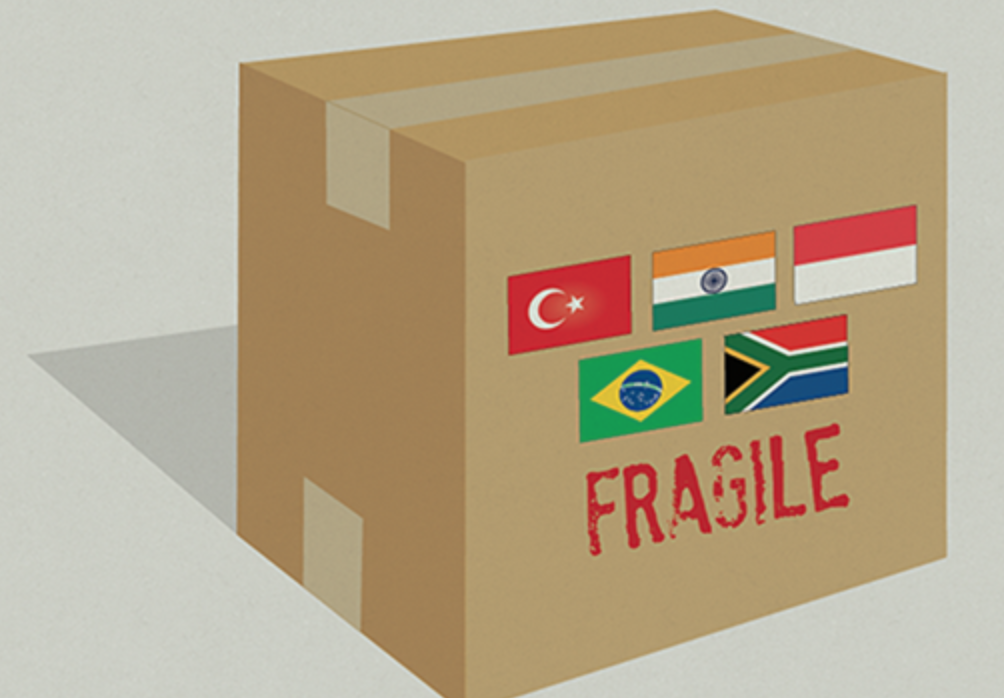
Date: 6 September, 2018 - Blog
It would not be the first time that acronyms emerge at the worst moment. Financial markets history is replete with examples. When Goldman Sachs economist Jim O’Neill first introduced the BRICs terminology in 2001 for Brazil, Russia, India and China, he argued that they should lead global growth over the coming decades. It was a good time to sell emerging-market equities. Then, PIGS – Portugal, Italy, Greece and Spain – was used to identify the weakest European countries during the 2010 crisis and nobody wanted them anymore in portfolios. Going long the European peripheral bonds had been a good bet. And when the original Fragile Five – South Africa, Turkey, Brazil, India and Indonesia – was presented by Morgan Stanley in 2013, they were all running high and rising current account deficits, making them more dependent on foreign capital flows. But, it turned out to be a smart time to buy emerging assets.
After a stellar run in 2017, 2018 is clearly different for EM. The mix between a rising USD and US yields hit sentiment. The mood did not improve due the US and China trade escalation. In addition, uncertainties about trade and geopolitical relations between the US and the rest of the world have been cast into doubt by the sanctions against Iran, Turkey and Russia. South Africa was the latest one to fringe attacks from Trump regarding the coming land reforms. This is introducing caution amongst investors, trying to guess who will the next one be . As a result, EM stocks and bond prices have dropped. The Fragile Five expression is resurfacing, with a lot of banks or rating agencies refreshing their members. Amongst them, the most obvious are Turkey and Argentina, followed by Russia, Brazil and South Africa.
Turkey is clearly an outlier when it comes to external vulnerability given its large negative net investment position and current account deficit. It has been hit by US sanctions, along with weak central bank independence.
In complete contrast to Turkey, we have Argentina. It has called for an IMF support, which has agreed a comprehensive reform program, including strengthening central bank independence, allowing exchange rate flexibility and fiscal adjustment. However, the Peso collapse has accelerated after President Macri called for the IMF to accelerate disbursement under its standby program amid deteriorating market sentiment. The central bank hiked its benchmark rate from 45% to 60% in a forceful attempt to shore up confidence. However, the Peso has continued to weaken. The ball is now in the IMF camp. Additional support should be forthcoming sooner rather than later given the voice of support from the IMF managing director.
The BRL has come under pressure following election polls showing a sizeable lead for imprisoned former president Lula. Even though Brazilian courts have ruled out the possibility of the former president running formally, investors fear that public opinion could override this decision. The key concern in Brazil involves the gross public debt-to-GDP which has risen to 90% of GDP with an 8.5% of GDP budget deficit. The absence of fiscal adjustment in the event of a Lula presidency could quickly lead to sizeable market pressures on Brazil. The South African economy has been hit by a slight contagion from Turkey given it also has weak external indicators. Furthermore, the prospect of a controversial land reform has triggered criticism from US President Trump, raising the risk of future US sanctions like those seen against Turkey. In contrast to Turkey, South African central bank and ministry of finance look both independent. Russia does not have similar weak economic fundamentals as the other countries. However, two new sets of US sanctions have cast doubt on the future trajectory of the Russian economy and financial sector, weighing on the RUB. When acronyms (re)-emerge the current dynamic is close to an end
- Russia is the most compelling country across EM
- Wait for stabilization signs before reloading some risks





